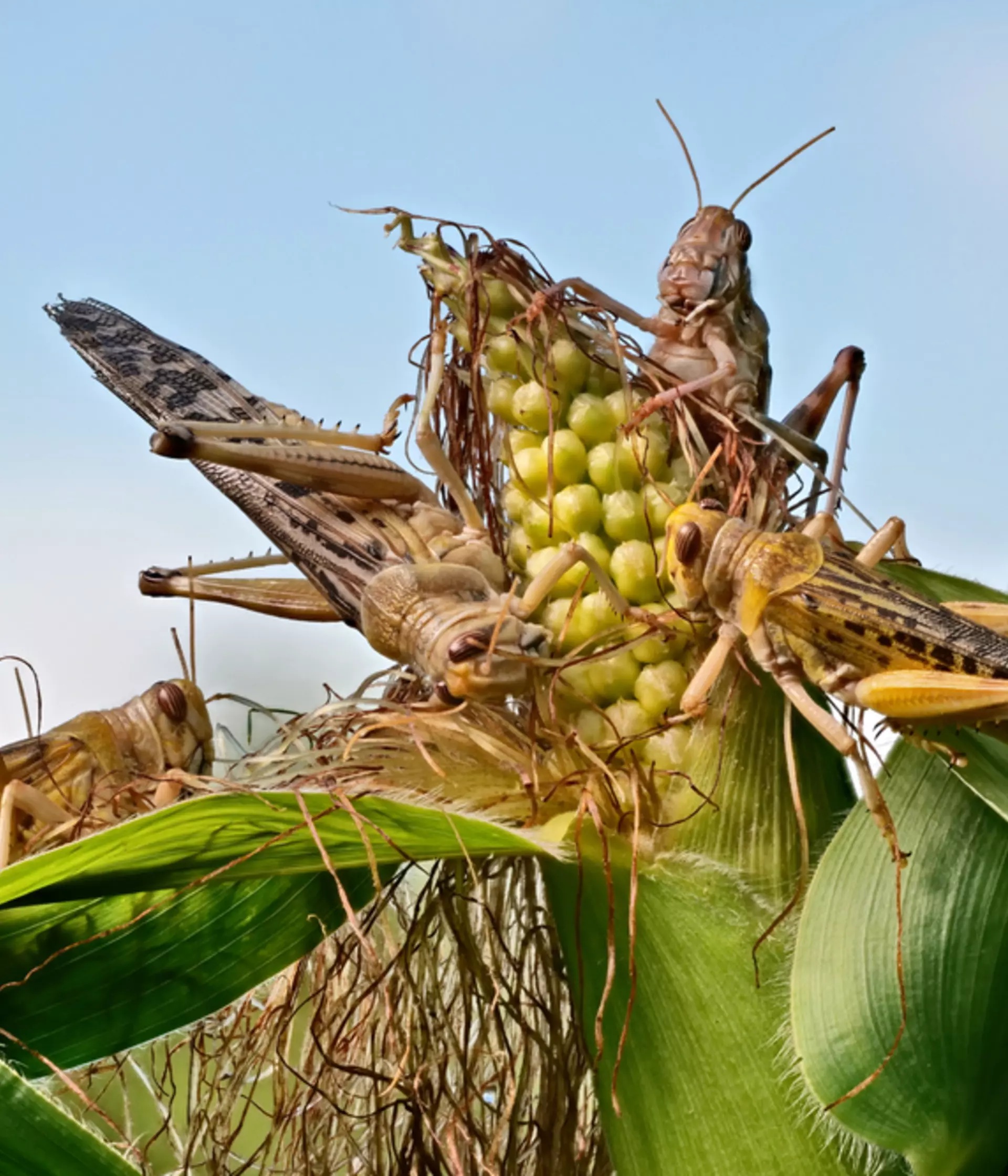Area of zoo
Enclosure status
Open
IUCN status
Least Concern
Scientific name
Schistocerca gregaria
Order
Orthoptera
Type
Invertebrates
Family
Acrididae
Region
Primarily Africa and Asia
Habitat
Deserts and dry grasslands
Desert locust facts
- Desert locusts consume their body weight in vegetation every day which is a around 2g, but as a swarm they can be devastating for farmers.
- A small swarm of 1 km2 can be made up of 80 million locusts and can consume the same amount of food in one day as 35,000 people, while a large swarm can eat up to 1.8 million metric tons of green vegetation, equivalent to food enough to feed 81 million people.
- In Kenya, a swarm larger than the size of London at 2,400km2 was recorded in 2020, which left people fighting for lives to keep the swarm off their crops.
- A large swarm can eat up to 1.8 million metric tons of plants, equivalent to enough food to feed 81 million people.
- Locusts are a type of grasshopper, which is uniquely able to switch from solitarily living to swarming as a group. Their body and appearance changes once this change happens.
- This swarming behaviour is triggered by high rainfall. When there’s plenty of lush vegetation for the wingless nymphs (called 'hoppers'), their numbers can explode and the insects are no longer able to avoid each other.
What do desert locusts eat?
Desert locusts feed on leaves, grain, shoots, flowers, fruit, seeds, stems and bark.
What do desert locusts look like?
Desert Locusts are flying insect are typically yellow/brown in colour, with a long body, six limbs and a set of large wings that stretch the length of their body. Desert locus head and body are yellow, while their wings feature brown dots. They’re heads also feature large eyes.
Where are desert locusts from?
Primarily based in Africa, Asia and the Middle East, covering more than 60 countries.
Desert locust threats
Predators and pesticides.
